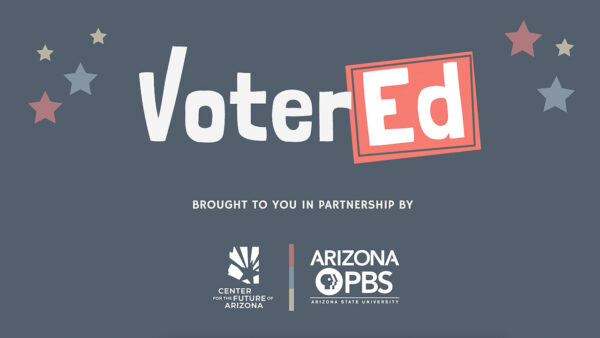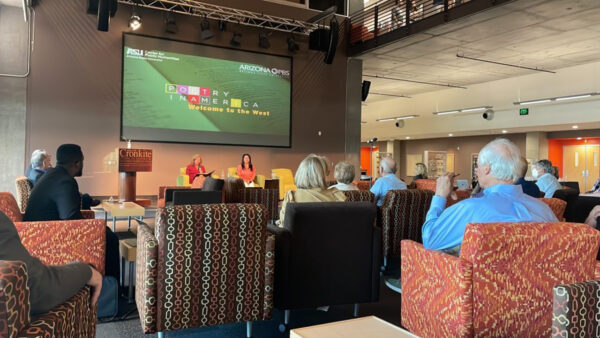POV “Where Soldiers Come From”
Nov. 10, 2011
An Intimate Portrait of the Effect One National Guard Unit’s Deployment Has on a Group
Of Longtime Friends and the Small Town They Leave Behind
“Deeply emotional. . . . a fine documentary by an experienced and talented filmmaker.”
— Robert Mackey, The Huffington Post
It wasn’t long after Dominic Fredianelli, a sensitive, artistic high school graduate in a remote town in northern Michigan, signed up for the National Guard that his buddies started following his lead. In exchange for just one weekend of training a month, they would earn a $20,000 signing bonus and much-needed college tuition support. Before he knew it, 10 friends were in the group. They knew there was a chance that they’d be sent to war sometime during their six-year stint, but, as Cole Smith, Dominic’s best friend said, “I wasn’t really doing anything; my buddies had already joined. . . . I figured, ‘Twenty Gs, one weekend a month, let’s do it!’” POV “Where Soldiers Come From” airs Thursday, November 10, 2011 at 11 p.m. on Eight, Arizona PBS.
Thus begins director Heather Courtney’s new film, Where Soldiers Come From, which paints an intimate portrait of these friends’ four-year journey from teenagers stuck in Michigan’s Upper Peninsula to soldiers in Afghanistan.
Shooting in vérité style, Courtney focuses on three of the friends — Dominic, who takes art classes and paints large murals in the abandoned buildings that belonged to a once-thriving copper mining industry; Cole, the comedian in the group; and Matt Beaudoin (“Bodi”), who has a history of military service in his family and is proud to serve his country. They change from carefree teenagers who spend their days swimming in Lake Superior and drinking at bonfires to soldiers getting hit by homemade bombs in Afghanistan and combat veterans dealing with traumatic brain injury (TBI) and post-traumatic stress disorder (ptsd).
Where Soldiers Come From starts in Hancock, the friends’ and Courtney’s hometown. The director films the guys and their families in their everyday lives, revealing the economic realities that contribute to their decision to enlist and creating poignant portraits of a community and its people. In December 2008, the unit leaves for Afghanistan, where the men spend most of their days sweeping the countryside in tanks and on foot looking for improvised explosive devices (IEDs). Armored vehicles shield the soldiers from the brunt of the damage, but the men are still shaken each time they uncover a new bomb and receive concussions and other injuries that seem mild at first, but have a cumulative effect. While the soldiers look for bombs, their families and loved ones back home try to get through their daily routines.
The friends are often perplexed about their reason for being in Afghanistan, and they grow increasingly disillusioned with their mission. What they find is not the glory of battle as depicted in war movies and on television, but rather work that likely wouldn’t exist if they weren’t there. The IEDs have been planted to kill U.S. soldiers. So, one of the guys asks, if the soldiers weren’t there, would there be any need for them?
Although members of the group all suffer physical distress, their emotional reactions vary. Bodi starts out loving his job, which he calls “the most exciting” because he gets blown up the most; he later admits that the war has turned him into “a racist American” who hates everything about Afghanistan. Cole provides comic relief with good-natured wisecracks, but internalizes his stress and develops an ulcer and adult asthma. Dominic discovers empathy for the Afghanis, particularly the children, that he believes have been forced into bad situations by economic necessity. “Before I came to Afghanistan, I knew about compassion, but never really felt it.”
Where Soldiers Come From continues to follow the young men back in their hometown after deployment, where new problems begin to surface. Dominic starts to pick up the pieces through his art and starts a giant graffiti-style wall mural with the support of a caring professor. However, he describes himself as “an antisocial nutcase,” and his girlfriend, Ashley Baker, must now cope with an intense anger she had never seen in him before. Cole enrolls in a local college, but struggles with breathing problems and obstacles to receiving the tuition reimbursement he was promised. Bodi, who experiences insomnia and headaches, says, “Coming home is harder than going over there. I’d rather be back in Afghanistan. Life is easier. All you have to worry about is getting blown up.”
Bodi and Dominic both suffer from what has been called the new signature wound of Iraq and Afghanistan, TBI, the long-term effects of which can range from headaches, dizziness and vertigo to problems with memory and reasoning. In 2010, the military estimated that 115,000 troops have suffered mild traumatic brain injury since the wars began, though some studies put the number at several times that, and tens of thousands are estimated to suffer from ongoing symptoms.
Some soldiers are rendered unable to drive a car, read a newspaper article or help their children with their homework, and according to a study in June 2010 by NPR and ProPublica, many of those troops who suffer from TBI receive little or no treatment for lingering problems. For National Guard soldiers, it can be even harder — although they are eligible for Veterans Administration benefits, it is more difficult to find support since they are not on a military base like active-duty soldiers and are often in rural areas like northern Michigan.
“Where Soldiers Come From is an American story about growing up and trying to change your situation without privilege or resources,” says Courtney. “It’s about the people who fight our wars and the communities and families they come from.
“I felt it was important to follow these guys for a long time before they ever became soldiers so that the viewer would really know them and their families,” she continues. “For these young men and their loved ones, the war doesn’t end when they come home. I hope my film can help people better understand the war at home — the one that affects the parents, girlfriends and loved ones left behind when soldiers are deployed and the one that continues when they come back and try to start their lives again.”
Media Contact: Colleen O’Donnell Pierce
[email protected]
(602) 496-0579
(602) 478-3867 (cell)
Visit azpbs.org/pressroom
About Arizona PBS
Arizona PBS is a trusted community resource. For over 52 years, the PBS station has focused on educating children, reporting in-depth on public affairs, fostering lifelong learning and celebrating arts and culture. Arizona PBS achieves its mission through the power of non-commercial television, the Internet, educational outreach and community-based initiatives. Its signal reaches 80 percent of the homes in Arizona. With more than 1 million viewers weekly, Arizona PBS consistently ranks among the most-viewed public television stations per capita in the country. For more information, visit azpbs.org or follow us on Facebook, Twitter, Google+, Instagram, Pinterest or Tumblr.
Arizona PBS is a member-supported community service of Arizona State University and the Walter Cronkite School of Journalism and Mass Communication.
)






















